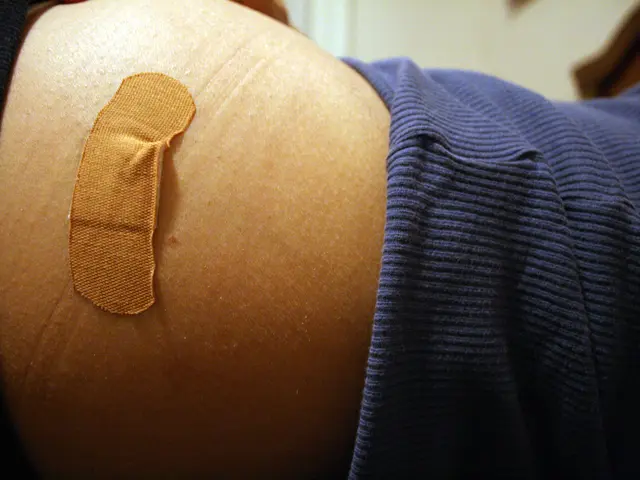Understanding Intermittent Explosive Disorder (IED): A Guide
Managing the Intermittent Explosive Disorder: Coping with Spontaneous Outbursts of Anger
Lose the temper, make fool out of yourself at times?! That might be the simple description of a bad day for most folks. But what if those angry outbursts are recurring, disproportionate to the situation and causing trouble in your personal and professional life? Welp, you might be dealing with Intermittent Explosive Disorder (IED). Here's a rundown of this mental health condition, its causes, symptoms, diagnosis, and treatment options to help you navigate the situation.
Table of Contents
- Why's my Cool Turning into a Hot Head?
- IED: Prevalence and Risk Factors
- Who's Affected by IED and Why?
- IED: It's Symptoms
- Come on, Doc! Diagnosing IED
- Co-occurring Disorders
- The Impact of Intermittent Explosive Disorder
- IED Treatment and Coping Strategies
- Living with IED: The Struggle and the Support
- Seeking Help: Don't Keep Quiet on This One
- Closing Remarks: A Better Future Awaits
Why's my Cool Turning into a Hot Head?
IED, or Intermittent Explosive Disorder, is an impulse control disorder characterized by an ongoing cycle of impulsive anger, verbal aggression, and physical outbursts that are far from proportionate to the situation. These episodes can last less than 30 minutes and may cause lasting stress, relationship problems, and legal issues.
IED: Prevalence and Risk Factors
Approximately 1.41% to 7.1% of the population will experience IED at some point in their lives. It's more common among younger adults, particularly males. Genetics, brain structure, and environmental influences, including experiencing violence, abuse, or trauma as a child, can contribute to the development of IED[1].
Who's Affected by IED and Why?
People with IED display normal behavior outside of these aggressive episodes. They may have a low frustration tolerance and struggle with managing their anger. Their impulsive reactions, fueled by intense emotions, can manifest as anger outbursts, verbal altercations, physical fights, or property destruction[2].
IED: It's Symptoms
Symptoms of IED include irritability, increased energy, racing thoughts, and physical reactions like trembling and a quickened heartbeat before an outburst[2]. After the outburst, individuals may experience a sense of relief followed by guilt, regret, or embarrassment.
Come on, Doc! Diagnosing IED
To nail the diagnosis of IED, a mental health professional shapes up for a thorough evaluation. The Diagnostic and Statistical Manual of Mental Disorders (DSM), published by the American Psychiatric Association, lists three impulsive aggressive episodes within a specific period as the criteria for a diagnosis of IED. The severity, frequency, and impact on functioning during these episodes are also assessed[2].
Co-occurring Disorders
IED often goes hand in hand with other mental health conditions like Attention Deficit Hyperactivity Disorder (ADHD), Conduct Disorder, Oppositional Defiant Disorder (ODD), Bipolar Disorder, anxiety, depressive disorders, and Post-Traumatic Stress Disorder (PTSD). The presence of these additional disorders can complicate IED management and necessitates a comprehensive approach[2].
The Impact of Intermittent Explosive Disorder
Untreated IED can have severe consequences, including impaired interpersonal relationships, domestic or child abuse, legal problems, job instability, substance abuse, and self-harm. It can also lower self-esteem, exacerbate other mental health conditions, and negatively impact overall well-being and quality of life[2].
IED Treatment and Coping Strategies
Treatment for IED typically involves a combination of psychotherapy and, in some instances, medication. Cognitive Behavioral Therapy (CBT) is frequently the primary therapeutic approach, aiming to identify and modify the maladaptive thoughts and behaviors linked to anger and aggression. This may include cognitive restructuring, relaxation training, coping skills training, and relapse prevention techniques[2].
Living with IED: The Struggle and the Support
Living with IED can be tough, but the right attitude, treatment, and support can help you lead a fulfilling life. Practices like self-care, such as regular exercise, a balanced diet, enough sleep, and stress reduction techniques, can contribute to overall well-being and improve emotional regulation[2].
Seeking Help: Don't Keep Quiet on This One
If you suspect you or someone you know might be struggling with IED, seeking help from a mental health professional is crucial. That doctor visit can lead to an accurate diagnosis and the right recommendations for treatment[2].
Closing Remarks: A Better Future Awaits
IED is a challenging condition, but with the right diagnosis, support, and strategies, individuals can learn to manage their symptoms and lead more fulfilling lives. Remember, it's the journey to understanding ourselves that makes life a bit less explosive.
- Recognizing that the current fashion trends could help in understanding emotional regulation, mental health professionals might suggest incorporating elements of mindfulness and calmness into one's style choices as a coping strategy for managing Intermittent Explosive Disorder (IED).
- Making improvements in one's physical and mental health through health-and-wellness practices, such as exercise, a balanced diet, and stress reduction techniques, can contribute to overall well-being and emotional regulation in individuals dealing with Intermittent Explosive Disorder (IED).







